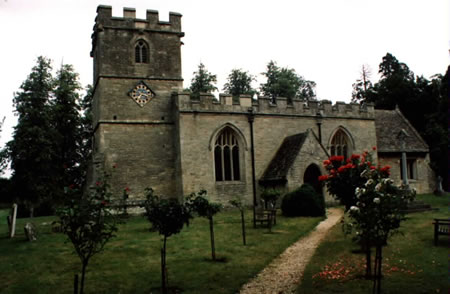Whilst the church of St James the Great at South Leigh did not gain independence until 1868, it has a much longer history, having been built by 1176 and being able to conduct burials in its own cemetary.
The font is 15th century and baptisms must have been conducted although recorded as in Stanton Harcourt. At times, the vicar of the mother church at Stanton Harcourt was required to maintain a curate at
South Leigh; at others, the Stanton Harcourt vicar led services in both churches.
The first vicar of South Leigh had a vicarage built, helped to set up the village school, established a choir, founded St James' College (an independent school designed to enable the St James'
choirboys to improve their literacy), organised a clothing club and a lending library and increased the number of weekly services from one to 14.
On arrival he found the church in a ruinous state and saw to its restoration. It was during these restorations that the 15th century wall paintings were discovered.
Ironically, having served as a chapelry of Stanton Harcourt for so many centuries and becoming a separate parish with its own vicar only in 1868, St James the Great, South Leigh has had no resident
vicar since 1970 and is now served from Cogges. It remains, however, a separate parish.

Church of St James the Great, South Leigh